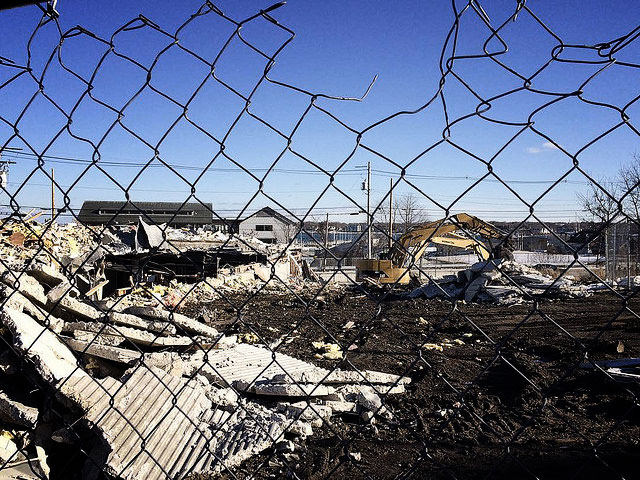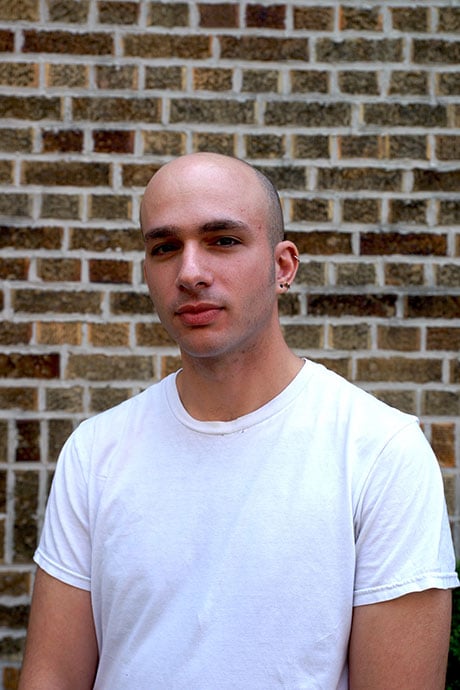
The following is a Truthout interview with Peter Moskowitz, author of How to Kill a City: Gentrification, Inequality, and the Fight for the Neighborhood.
Mark Karlin: How do you define gentrification?
Peter Moskowitz: Gentrification has many meanings, and I think that’s great — it’s a sign normal people are taking control of it and taking it away from super-academic territory. But in terms of cities, I think gentrification is essentially always a predictable, mostly top-down process of turning cities from community-controlled entities into neoliberal, capital-controlled entities. It may seem like gentrification is random — a coffee shop opens here, a block becomes more expensive there, but in every city it happens there’s a confluence of similar policy choice that leads to gentrification. The end goal always is to fund cities through trickle-down economics, to hope that attracting enough of the rich to your city will pay for its basic necessities. That’s a harsh reality for a lot of cities today because federal taxes are so low (about half what they were 40 years ago). So that means instead of the rich, via income taxes, paying for things like public education, public transit, streets, etc., cities attempt to fund those things via hipsters paying $4 for muffins. That’s how gentrification takes hold of city policy. That’s why it’s a bigger issue than hipsters.
How did you personally experience the impact of gentrification?
 Peter Moskowitz. (Photo: Emily Pober Higgins)I grew up in the West Village of Manhattan, the same neighborhood Jane Jacobs wrote The Death and Life of Great American Cities in. She saw the Village as the best example of what a neighborhood should be: human-scale, diverse, affordable. My parents bought a loft for next to nothing back in the early 80s. By the time I was an adult, they were some of the only original residents left. The rest had been bought out by millionaires and billionaires — people who do things like sell weapons to the US government and trade stocks on Wall Street. I could obviously not afford my own place in the Village anymore, so I moved to Queens, then Brooklyn. There, I found myself on the other side of the process as one of the young white people displacing communities of color. I knew I wasn’t necessarily personally responsible on an individual level for the wholesale change happening in these neighborhoods, but it made me deeply uncomfortable. What is this system that can help turn the neighborhood I grew up in into an upscale mall for billionaires, and then help me force out others in the process? That’s what got me interested in exploring these top-down efforts to gentrify cities — because I realized it was bigger than the individual level.
Peter Moskowitz. (Photo: Emily Pober Higgins)I grew up in the West Village of Manhattan, the same neighborhood Jane Jacobs wrote The Death and Life of Great American Cities in. She saw the Village as the best example of what a neighborhood should be: human-scale, diverse, affordable. My parents bought a loft for next to nothing back in the early 80s. By the time I was an adult, they were some of the only original residents left. The rest had been bought out by millionaires and billionaires — people who do things like sell weapons to the US government and trade stocks on Wall Street. I could obviously not afford my own place in the Village anymore, so I moved to Queens, then Brooklyn. There, I found myself on the other side of the process as one of the young white people displacing communities of color. I knew I wasn’t necessarily personally responsible on an individual level for the wholesale change happening in these neighborhoods, but it made me deeply uncomfortable. What is this system that can help turn the neighborhood I grew up in into an upscale mall for billionaires, and then help me force out others in the process? That’s what got me interested in exploring these top-down efforts to gentrify cities — because I realized it was bigger than the individual level.
What is the role of capital in the process?
Capital controls all. Gentrification wouldn’t happen unless it was profitable — that sounds like such an obvious statement, but look at how it’s usually covered by the mainstream press: as an organic back-to-the-city movement. But developers don’t build condos for fun; they don’t lobby governments as a hobby. Gentrification happens because developers, and federal and state governments, made cities profitable to gentrify. You have to go back to the creation of the suburbs after the Great Depression to really understand it. The federal government convened a meeting of home builders after the depression and essentially said: how do we jumpstart the American economy, while ensuring that white people don’t live too close to people of color, and also while instilling American values at a time of growing progressivism? The solution: create the suburbs, create mortgages to make suburban home buying possible, and ‘redline’ communities of color so that you create a disinvested, mostly Black and Hispanic city, and a wealthy, nearly all white suburb. This would sound like a conspiracy if it weren’t so well documented in federal papers from the time. Fast forward to now, the same governments that helped make the city so cheap for real estate investors through a racist disinvestment are now hailing the suburbanites they gave housing wealth to and the developers they enriched via the suburbs as heroes for moving back downtown.
In what way does gentrification represent the new geography of inequality?
There’s no way to know hard numbers on this, but I would guess that in 20 years, most major American cities will look a lot more like European ones, but more unequal, with a rich, touristy center and a vast, poor outer section. We’re essentially seeing the geography of wealth reversed. Now people who might have come to the city 20 years ago — immigrants, the poor — are going to suburbs and exurbs, where housing is cheap, and where there are some low-wage jobs. Of course, building community, resistance, or anything else in the suburbs is really hard, so this is not a value-neutral reshaping. It essentially guarantees a certain kind of disconnected politic, with the rich, ruling class in city-based bubbles, and a disconnected mass of people spread out everywhere else (I’ve written about how this is the reason Dems lost the election).
Can you explain the process by which western Brooklyn and San Francisco became gentrified?
The process has been planned for decades and decades. It’s not a recent phenomenon. In the early 1900s, New York’s wealthiest got together and hatched a plan to deindustrialize New York, and bring in more wealthy property owners. It was good for the real estate industry, and good for bankers. New York City has essentially followed that plan to a T. That’s why New York deindustrialized so quickly in the post-war era (leading to its near-bankruptcy and the “Bad Old Days”) — it was a multi-decade plan to consolidate real estate wealth. People view New York’s changes as inevitable, but they were all sculpted by the richest New Yorkers. What you’re seeing now is essentially just a domino effect from that plan. New York’s center becomes wealthy, so its outer boroughs become upper-middle class, and the poor have to scramble elsewhere.
San Francisco has been a bit haphazard in its redevelopment — i.e., it didn’t have a century-long plan. But it has tried to achieve the same thing nonetheless via courting the tech industry: replacing a middle-class-friendly city with a rich-friendly one in order to increase real estate values and their tax base.
Your conclusion is entitled, “Toward an Un-Gentrified Future.” What are examples of some ways that goal would be achieved?
We gotta be in it for the long haul. The US is based on a history of displacement, from the genocide of Native Americans to redlining in the 1950s. It’s in the country’s blood to accumulate capital that way. There are some commonsense ways to protect renters — increased rent control, caps on rent, that kind of thing (Berlin is a good example of this). But for a chance at a truly equitable city in the future, we need to radically rethink land and housing. Housing wasn’t mentioned once during the presidential election. We don’t often see protests over housing, even though it’s our main living cost. We need to really politicize land and housing in this country if we want to see any movement in the right direction.
Our most important fundraising appeal of the year
December is the most critical time of year for Truthout, because our nonprofit news is funded almost entirely by individual donations from readers like you. So before you navigate away, we ask that you take just a second to support Truthout with a tax-deductible donation.
This year is a little different. We are up against a far-reaching, wide-scale attack on press freedom coming from the Trump administration. 2025 was a year of frightening censorship, news industry corporate consolidation, and worsening financial conditions for progressive nonprofits across the board.
We can only resist Trump’s agenda by cultivating a strong base of support. The right-wing mediasphere is funded comfortably by billionaire owners and venture capitalist philanthropists. At Truthout, we have you.
We’ve set an ambitious target for our year-end campaign — a goal of $250,000 to keep up our fight against authoritarianism in 2026. Please take a meaningful action in this fight: make a one-time or monthly donation to Truthout before December 31. If you have the means, please dig deep.
